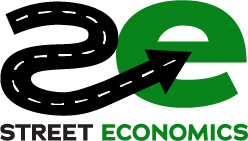As the Federal Reserve considers a rate cut, there’s speculation surrounding its political motivations and whether it borders on election interference. More importantly, there is growing anticipation about what it could mean for local economies, particularly in hyper-local settings where community impact is essential, and since the reality is that the Fed’s mischief has much more potential implications on local economies than Tuesday night’s result. While a rate cut can create opportunities for local growth, it’s important to have a balanced view of what’s realistic, actionable, and what communities should keep in mind for the long haul.
Potentially Lowered Borrowing Costs – But Challenges Remain
Lower borrowing costs could help small businesses and local governments. Reduced rates would make it easier for communities to access funding for critical projects, like downtown enhancements or public space improvements. It would also make it easier for entrepreneurs to invest in their businesses.
Reality Check: While easier borrowing can help, it’s not a silver bullet. Businesses still face high costs in other areas, such as labor and materials, which a rate cut won’t alleviate. Municipalities need to weigh borrowing carefully, especially if they lack a clear strategy for debt management.
A Boost in Consumer Spending Power – Yet Inflation Lurks
Cheaper credit may encourage consumer spending, benefiting local businesses and boosting foot traffic in key areas. This can be a positive for communities that rely on local spending for economic vibrancy.
Reality Check: Increased spending power may be offset by inflationary pressures that a rate cut could inadvertently fuel. Communities should prepare for potential increases in the cost of living, which may impact residents’ ability to patronize businesses in the long term.
Local Bond Markets Look More Attractive – But Plan for Maintenance
Lower interest rates could also make municipal bonds a more viable option for funding projects like infrastructure upgrades or public amenities, which can elevate a community’s appeal. Bonds can fund transformative projects that enhance quality of life and spur private investment.
Reality Check: Bonds are often misunderstood as “free money” but represent significant obligations. Communities should account for ongoing maintenance costs and ensure a long-term plan is in place. This is especially critical for towns and smaller cities, where budgets are tight, and maintenance funding isn’t guaranteed.
Temporary Relief – Long-Term Strategy Required
A Fed rate cut may offer temporary relief, but communities should focus on sustainable strategies beyond lower borrowing costs. BusinessFlare’s approach emphasizes that market-driven planning and realistic investments are essential for long-term resilience.
Reality Check: Rate cuts don’t change fundamentals. As we discuss in Gut Sandwich, local economic development is driven by a mix of quality-of-life factors, regulatory efficiency, and market dynamics. A temporary rate cut shouldn’t distract communities from their core development priorities.
Bottom Line
While a Fed rate cut can open doors for growth, communities should approach these potential gains with a clear-eyed perspective. Hyper-local development benefits from focused, market-driven strategies and careful resource allocation. A realistic approach will ensure that communities not only capture short-term benefits but also build long-term resilience in an ever-changing economic landscape.




Comments are closed